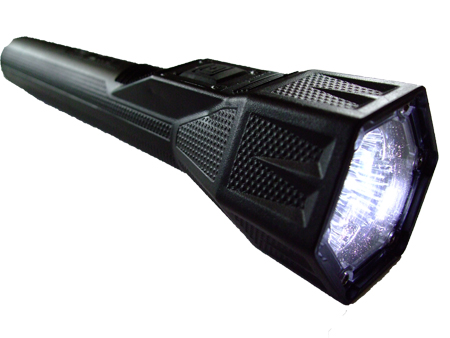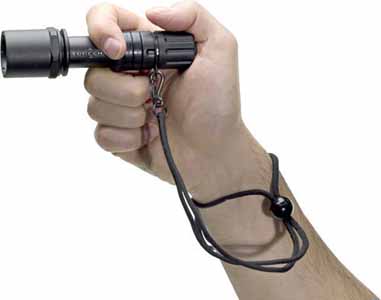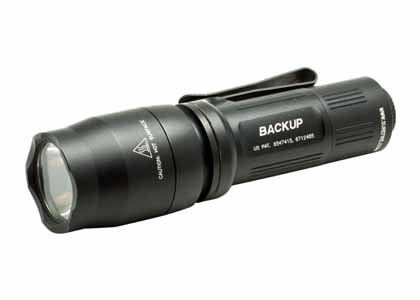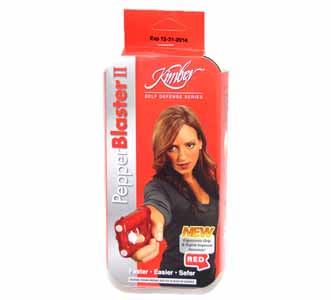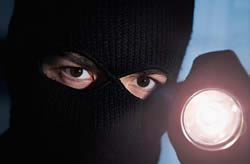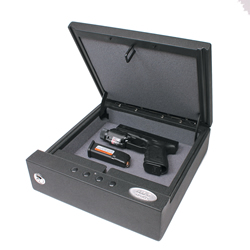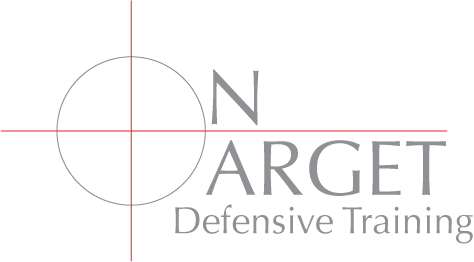Home Defense Tactics |
|||||
|
From Sportsman's News Magazine
Statistics are all well and good until you or a member of your family becomes one, then you really don’t care how rare or infrequent these violent home invasions are, because in your world, they went from zero to 100 percent in the blink of an eye. Just as you keep some extra food on hand for an emergency, lock your doors at night, have a fire extinguisher handy and also a good first aid kit on hand “just in case,” so should you also have the tools and a plan to defend your home and your loved ones in case of a home invasion. Gear
Just dialing 911 is not implementing an effective home defense strategy. The Supreme Court and various lower courts have ruled that the police do not have an affirmative responsibility to protect you from criminals. That means that the job of the police is to investigate and track down your murderer, but not to prevent him from murdering you. Because of this, it is vital to have the right tools where you can easily access them in an emergency. Many of my students are surprised when I ask how many of them charge their cell phones in the kitchen or den instead of on their nightstand. Having your cell phone anywhere other than on your nightstand means that when seconds count and a bad guy is in your home between you and your means of communications, you are seriously out of luck. Without the means to call for help, you are at the mercy of your home invader. Without help on the way, the criminal has as long as he needs to accomplish whatever evil plan he has concocted without fear of interruption. Keep that cell phone on your nightstand where you can get to it.
A very bright flashlight serves a multitude of purposes. It provides you with the means to identify a threat, disorient that threat and also provides a means of escape on a dark and moonless night if you need to get out. I never suggest that anyone trust their life to a cheap $10 LED light from the gas station. If you are going to trust your life to it, you want something that will perform when needed. Reliability is a must. I carry a Surefire E1B Backup clipped to my pocket at all times. In my car is a 5.11 Tactical Light for Life. On my nightstand, right next to my cell phone, is a Surefire G2Z Nitrolon Combat light. I have a lanyard attached to my Nitrolon so I can easily retain my flashlight and use my cell phone and a defense weapon at the same time. The Surefires use CR123 batteries that have a 10-year shelf life and provide exceptional brightness.
The 5.11 Tactical Light for Life uses an innovative battery-free charging system that allows hours of burn time on a 90 second charge. These lights aren’t cheap, but I, as well as those I care about, are worth it. Choice of a weapon is a highly personal decision. Some want something less than lethal and others want to take down the bad guy and keep him down. In most states you have the right to defend yourself inside your home with lethal force. Check on the laws in your area before you decide on a home defense weapon. The best way to clear a house of bad guys is to get out or lock yourself in a room and dial 911. Leave the room clearing to the professionals. There may be cases however, where you need to move around your house in order to get to children or other loved ones who may be in harm’s way.
In my home I rely on several home defense weapons, depending on what I am facing. If it is just me and the cats, I barricade in the bedroom and get down behind my mattress. I have placed a heavier door to my bedroom and installed a deadbolt. This will slow down someone interested in getting in so that I have time to arm myself with my 12-gauge shotgun. If I have to get to family members in other parts of the house, I break out my trusty M1911 .45 ACP with a Crimson Trace Laser Grip. This affords me better maneuverability, reliable accuracy in low light and a tremendous tactical advantage. Some would argue that the right weapon for moving about the home is a high velocity semi-automatic rifle such as an AR-15, but in my home, I don’t have the need to shoot anyone from 100 yards away. The maximum distance for which I have a continuous line of sight is 25 feet. Besides that, I don’t want high-powered rounds that retain most of their velocity punching through my brick walls and into the neighbor’s house. I would also prefer that they stay in the bad guy and not continue through him and present a danger to the very people I am trying to rescue. The ammunition I use is Hornady TAP 00 buckshot for the shotgun and Hornady Critical Defense for the .45. Hornady is making about the best personal protection ammunition on the market, but it comes at a price. If you are budget conscious, I recommend the Winchester PDX ammunition or even Speer Gold Dot for good stopping power without over penetration. If you are concerned about having guns in your home, make sure any less than lethal defense weapon gives you plenty of stand-off. A knife is great if you are forced to repel an attacker who has jumped out at you, but the best defensive weapon will provide you the ability to stay at least 15 feet from your attacker. The Taser C2 includes an integrated laser for aiming and fires two darts up to 15 feet, delivering a high voltage electrical charge that instantly incapacitates your home invader. It’s shortcoming is that bad guys often work with a partner or two and once you have fired the single shot Taser, you are out of luck if he has an accomplice. Another good tool for less lethal home defense is the Kimber PepperBlaster. The PepperBlaster uses an explosive charge, which shoots 10 percent OC pepper goo at 90 miles per hour, up to 23 feet. The PepperBlaster contains two shots, so in case of a miss or a second attacker, you are ready to go with a follow-up shot. Planning
If you have children, it is imperative that you keep your home protection weapon out of their reach. That means some way to lock it up, but still be able to get to it quickly. Whether you are using a pistol, a Taser or a PepperBlaster, a good means to keep your weapon out of little hands is to get a bedside gun safe like the SafeLock Top Loading Safe. It uses a simple five digit electronic keypad to quickly spring open in an emergency, providing quick access to your defense tool. If the children are old enough, train them in what to do if you call out a special code word. They should know that a certain word means lock their bedroom door and stay put until you get to them and another code word means high-tail it to Mommy and Daddy’s bedroom. It is good to have a code word so you aren’t alerting the bad guy to the fact that a passel of children is going to come running down the hallway because you yelled, “kids, run into our bedroom.” Make the code words easy to remember, but not so common that is likely to come up in casual conversation. In my house the word “fortify” means lock yourself in until I come get you. “Sesame” means open the door so I can get in. “Flee” means get out your window and go to the neighbors. “Safe Room” means get into my bedroom right this minute. The words you use are less important than everyone knowing what to do in various situations. Practice the plan with announced and unannounced drills, just as you do your home fire evacuation plan. If children are too young to understand or move on their own in a crisis, then you will have to get to them. This is where you place yourself at considerable risk moving out from your safe environment into the area controlled by the bad guy or guys. If you have your cell phone, you should be on the phone with 911 and let the bad guys know it. Often, just the fact that you may have called 911 is enough to make them get out of there quickly. That is, if they don’t think you are bluffing because they cut the main phone line and see your cell phone sitting on the kitchen counter. Also, let them know that you have a weapon and will defend yourself if they come toward you. This is as much for their benefit as it is for the 911 operator who is monitoring and recording the call. Before you move, visualize where you need to go and where a bad guy may be hiding. Use your knowledge of your home to consider the best course to take you where you need to go with minimal exposure. Put on shoes to prevent stubbing your toe in the darkness or in case you need to get the kids and run out the front door. I keep a pair of zip-up tactical boots by my bedside for just this purpose. With your weapon ready, slowly open your bedroom door and scan for immediate threats. Use your flashlight to identify anyone in your hallway with quick flashes. If a threat is present, engage that threat, but only AFTER POSITIVELY IDENTIFYING YOUR TARGET! If no threat is present, move to the first area where you may have line of sight on a potential threat hiding. Use short flashes from your light to see if it is safe to proceed. Engage any threats and if none are present, move to the next area. Use any cover or concealment you may have available to move to where you need to go. Once you are at your destination, shelter in place there, rather than trying to retrace your steps with young children who will provide a distraction to safe egress back to your safe room. This is just one possible scenario, which you may face. It is important to give serious thought to how you would deal with a variety of home invasions. “What if” is a good game to play so you can deal with a door being kicked in while you are watching TV or a window being smashed while you are asleep. Get the whole family involved, as a plan they help create is one they are more likely to follow in a crisis. Make sure you are clear on what to do. If a firearm is part of your home defense strategy, make sure you get proper training from a qualified and professional firearms instructor. Anyone who will have access to that firearm needs to get the training as well. Hopefully, all of your training and preparation will never be needed, but it is better to have it and not need it than to need it and not have it. About the author: In addition to his job as managing editor of Sportsman’s News, Dan Kidder is President and Chief Instructor of On Target Defensive Training. He is an NRA Certified Firearms Instructor, a former range safety officer for the National Rifle Association Headquarters Range in Fairfax, VA, and a former Marine. He has worked with hundreds of students, including members of local and federal law enforcement, as well as civilians. Sportsman’s News in no way endorses the use of violence and is not advocating for or encouraging anyone to carry a weapon or use a weapon upon another person. The information provided in this article is general in nature and does not cover any and all circumstances or situations. Sportsman’s News encourages anyone choosing to carry a weapon for personal protection to seek out the services of a qualified professional instructor and to comply with all local and federal laws.
The cost of ignorance is far higher than the price of our training. The Second Amendment of the U.S. Constitution: |
Dan Kidder •BCI/ NRA Certified Instructor • (435) 868-8919 • Cedar City, UT
| ||||
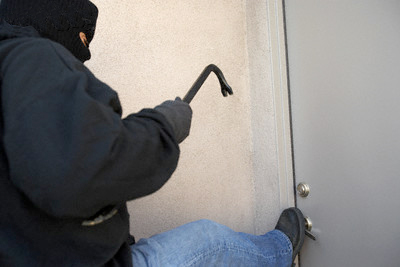 Nationwide violent crime is down in America, with noticeable exceptions across the Southwest where violent crime is on the rise. Home invasions, a specific category of violent crime, is not tracked by the FBI Uniform Crime Reports, but just turn on the news or pick up the newspaper and you will see that more often burglars are entering occupied dwellings.
Nationwide violent crime is down in America, with noticeable exceptions across the Southwest where violent crime is on the rise. Home invasions, a specific category of violent crime, is not tracked by the FBI Uniform Crime Reports, but just turn on the news or pick up the newspaper and you will see that more often burglars are entering occupied dwellings.